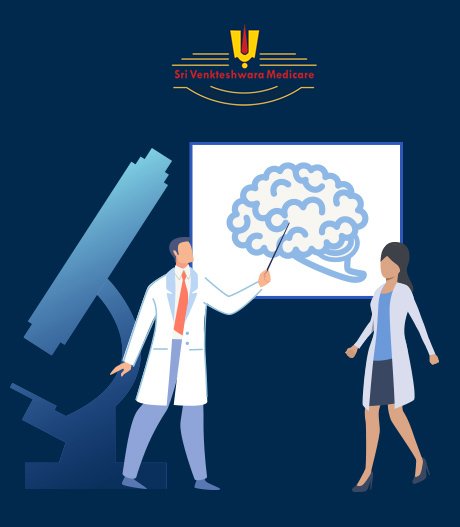Cardiology and Cardiothoracic Surgery
Cardiology is a branch of medicine which deals with the diseases/disorders of the heart and some parts of the circulatory system. This includes treatment and medical diagnosis of congenital heart defects, coronary artery disease, valvular heart disease, heart failure and electrophysiology. Doctor’s who are specialized in the field of medicine are known as cardiologists, a specialty of internal medicine. Pediatric cardiologists are pediatricians who specialize in cardiology. Doctors who undergone the specialization in cardiac surgery are called cardiothoracic surgeons or cardiac surgeons, a specialty of general surgery.
Cardiothoracic surgery is also known as thoracic surgery and the field of medicine involved in surgical treatment of the thorax or the chest. General treatment of conditions of the heart diseases and lungs diseases.
CORONARY ANGIOGRAM/ANGIOGRAPHY
A coronary angiogram is a procedure in which X-ray imaging is done to see the heart's blood vessels. This test is done to see any restriction in blood flow going to the heart.
Coronary angiograms are the parts of a general group of procedures which is also known as cardiac catheterizations. These procedures can both treat heart and blood vessel conditions and to diagnose. A coronary angiogram also done which can help to diagnose the heart conditions, this procedure is the most common type of cardiac catheterization.
Coronary angiogram is done if patients have:
 Symptoms of coronary artery disease like chest pain (angina)s
Symptoms of coronary artery disease like chest pain (angina)s Pain in your chest, jaw, neck or arm
Pain in your chest, jaw, neck or arm  New or increasing chest pain (unstable angina)
New or increasing chest pain (unstable angina) A heart defect you were born with (congenital heart disease)
A heart defect you were born with (congenital heart disease) Abnormality in the results of noninvasive heart stress test
Abnormality in the results of noninvasive heart stress test Other blood vessel problems
Other blood vessel problems  chest injury
chest injury A heart valve problem that requires surgery.
A heart valve problem that requires surgery.
Potential risks and complications include:
 Heart attack
Heart attack Stroke
Stroke Injury to the catheterized artery
Injury to the catheterized artery Irregular heart rhythms (arrhythmias)
Irregular heart rhythms (arrhythmias) Allergic reactions to the dye or medications used during the procedure
Allergic reactions to the dye or medications used during the procedure Kidney damage
Kidney damage Excessive bleeding
Excessive bleeding Infection
Infection
Angiogram help to show the doctors what's wrong with the blood vessels. It can:
 Show how many coronary arteries are blocked or narrowed by plaques or (atherosclerosis)
Show how many coronary arteries are blocked or narrowed by plaques or (atherosclerosis) Pinpoint the area where the blockages are located in blood vessels
Pinpoint the area where the blockages are located in blood vessels Show how much blood flow is blocked in the blood vessels
Show how much blood flow is blocked in the blood vessels Check to see the results of previous coronary bypass surgery
Check to see the results of previous coronary bypass surgery Check how the blood flow through the heart and blood vessels
Check how the blood flow through the heart and blood vessels
With this information doctor can determine what treatment is best for the patient and how much danger the heart condition poses to the patient health. Based on the results, the doctor may decide that what would benefit from having coronary angioplasty or stenting to help clear clogged arteries. This is also possible that angioplasty could be done during the angiogram to avoid another procedure.
CORONARY ANGIOPLASTY AND STENTING
Coronary angioplasty is a procedure in which a balloon is used to open a blockage in a coronary (heart) artery which is narrowed by atherosclerosis. With the help of this procedure improves blood flow to the heart.
Angioplasty is a common medical procedure. It may be used to:
 Improving the symptoms of CAD, like angina and shortness of breath.
Improving the symptoms of CAD, like angina and shortness of breath. Reducing damage to the heart muscle from a heart attack.
Reducing damage to the heart muscle from a heart attack.  Reducing the risk of death in the patients.
Reducing the risk of death in the patients.
Angioplasty research is still ongoing to make it safer and more effective and to prevent arteries from closing again and to make the procedure an option for more people.
Who Needs Coronary Angioplasty?
Coronary angioplasty is a procedure which is used to restore blood flow to the heart when the coronary arteries become narrowed or blocked due to coronary artery disease (CAD).
When CAD symptoms does not improve even after medicines and lifestyle changes, such as following a healthy diet and getting more physical activity, doctor will talk to about other treatment options. These options involve different types of procedures like angioplasty and coronary artery bypass grafting (CABG), a type of open-heart surgery.
Angioplasty is a procedure which is often used when there is less severe narrowing or blockage in the arteries and when the blockage can be reached during the procedure.
CABG is also an option if you have severe heart disease, multiple arteries that are blocked, or if you have diabetes or heart failure.
If Compared with CABG here are some advantages of angioplasty:
 Has fewer risks than CABG
Has fewer risks than CABG It won't require a large cut
It won't require a large cut This is done with the help of medicines and numb you and help you relax.
This is done with the help of medicines and numb you and help you relax.  Has a shorter recovery time.
Has a shorter recovery time.
There is a disadvantage of angioplasty as compared with CABG is that in this the artery may become narrow again with a period of time. The chance of this happening the narrowing is lower when stents are used and especially medicine-coated stents. These stents can also cause risk. In some cases, there may be blood clots in the medicine-coated stents and can cause a heart attack.










